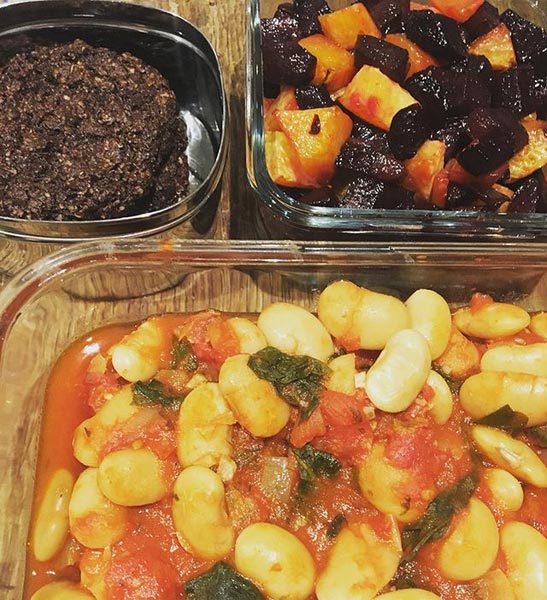Now that I’ve covered the benefits of organic foods, today we’ll discuss how to use them. People often ask how to ‘deal with’ dried foods, as we all feel more comfortable opening a box or a tin and following the instructions. But, you can feed a family with relative ease at a fraction of the cost of pre-packed goods, not to mention far less waste. Additionally, pre-packed foods are cooked using extra high temperatures and pressure, and with additives that we wouldn’t use in a home kitchen.
I lived for several years in Mexico and learned to cook dried beans to avoid going hungry. I tend to cook beans on a Sunday, and just tip a good load into a large bowl on Saturday evening, cover with about 1.5 times the amount of water, and leave them to soak overnight. I drain and rinse them, put them into a big pot covered with water, and throw in some peeled garlic cloves and half an onion for flavouring, as well as salt—you use much less salt overall if the beans absorb it during cooking. Timing varies, but is usually at least an hour, and you will need to taste them to know they’re done. I cool and freeze half the batch to have some on hand, and then we make burrito bowls with black beans, beans on toast with cannellini beans, hummus with chickpeas, stew with kidney beans, etc.—endless possibilities!
Lentils generally cook quickly and do not need to be soaked in advance. I do cover them with water while I am chopping onions, carrots, and other veg, and then strain before adding them directly to the pot with stock to simmer for a curry, dal or soup (I prefer red lentils or yellow split peas for these). You can eat them chunky or puree them, and they make a fantastic substitute for meat in some veg versions of classic meals like shepherd’s pie or spaghetti Bolognese (brown lentils are best), or to add texture to grain bowls or salads (Puy or Beluga lentils have the right bite in these dishes).
Because Western diets are heavy on wheat, it’s great to try out other grains. Barley bulks up soup or can be used as an alternative to rice for risotto. Buckwheat and millet are popular for alternatives to porridge made with oats, and both add nice crunch to homemade brown bread or muffins. Buckwheat flour makes delicious pancakes, and is naturally gluten-free, like gram (chickpea) flour. Quinoa is actually a seed that cooks like a grain, and it is high in protein and goes well with beans.
Finally, seeds like pumpkin, sunflower, flax and chia can be sprinkled on porridge or baked into breads and treats for a little boost of goodness. Try combining a few of your favourite nuts, seeds and dried fruits for a custom snack mix. Or try soaking nuts and blending them into salad dressings or spreads—cashews are great for vegan Caesar dressing or ‘cheese’.



